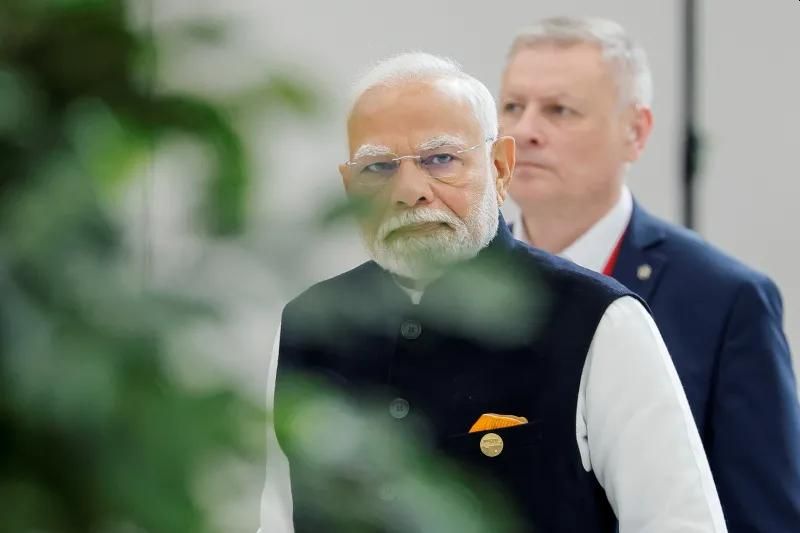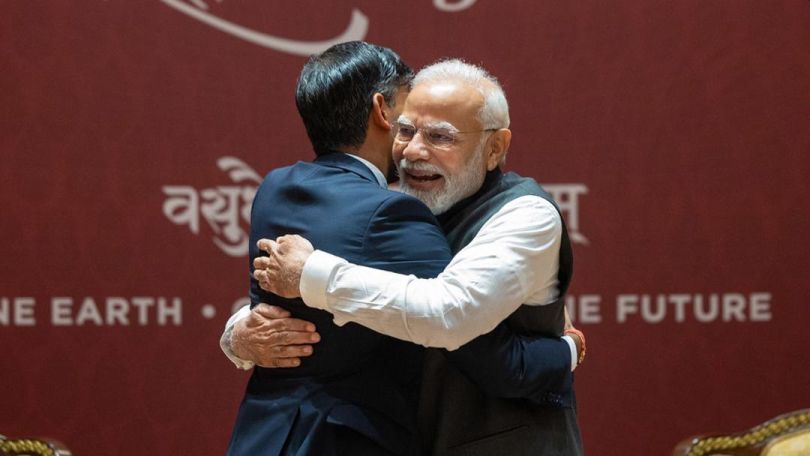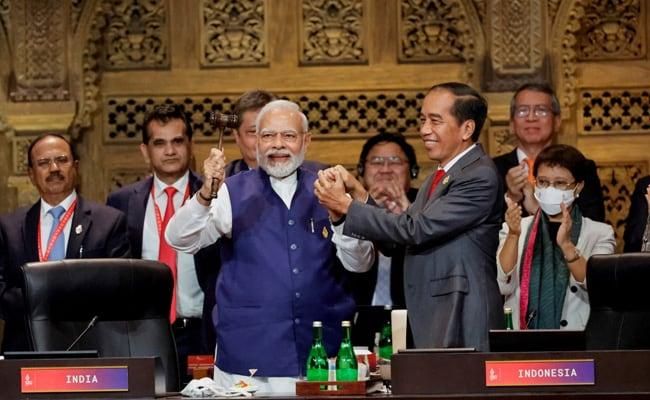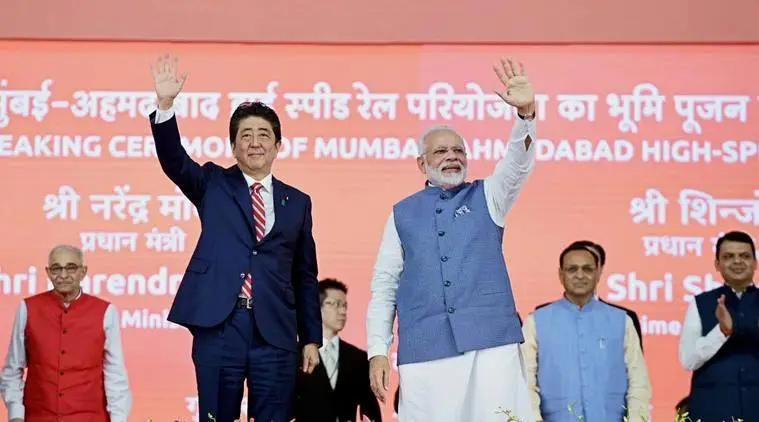By Eric Vandenbroeck and co-workers
India Will Carve Its Path
For more than a
decade, the United States’ Asia policy has been consumed with one issue: the rise
of China. President Joe Biden’s views did not fully align with those of
President Barack Obama, and both men had many differences with Donald Trump.
But all three fretted about what China, as a great power, might do to its
region and the world. They have, accordingly, oriented Washington’s
Indo-Pacific strategy around partnerships and policies that can constrain
Beijing.
But China is
not the only rising power in Asia. The continent is also home to India: another
nuclear-armed country with a huge population, army, and economy. And like
China, India has a regional reputation for hegemonic behavior. Yet the United
States hardly considers the possibility that India might pose a challenge of
its own. Instead, American officials have reached out to India as a partner and
encouraged its rise, hoping New Delhi will amass enough power to counterbalance
Beijing. They seem to want India to become a regional power, perhaps even
something akin to a “third pole” in the global order.
American officials
should consider a more complex strategy. New Delhi is a valuable partner in
many domains, including the competition with Beijing. But India is notoriously
intransigent in world politics. Its behavior on the global stage sometimes
worries even those countries that want or need to develop friendly relations
with it. Should India acquire the heft to become, as U.S. officials
hope, a true counterbalance to China, it will likely also consider itself a
counterbalance to the United States. In short, a tripolar world, with India as
the third pole, will not strengthen Washington’s or Beijing’s hand. Instead, it
will produce a more unstable global dynamic.

Go Your Own Way
Typically, when
countries become great powers, they challenge many of the norms and
institutions of the existing international order. Eventually, they try to
impose their own new order on the world. As a result, existing hegemons often
take steps to confront or otherwise prevent the rise of new peers.
Not so with India.
Unlike with China today or the Soviet Union before it, the United States is not
taking any actions to inhibit or contain New Delhi. Rather, the United States
is actively hoping for and choosing to facilitate India’s rise, much as London
facilitated Washington’s rise in the early twentieth century. For American
officials, that has meant drawing India into their network of close partners
and making India an important part of the U.S. supply chain strategy. It has
also entailed developing strong defense ties with India, expanding its access
to new and innovative technologies, and increasing intelligence sharing.
Finally, the United States has become much more sensitive about India’s anger
at foreign critics. As a result, the Biden administration has not
only refrained from commenting on concerns about Indian democracy but also
boosted Indian Prime Minister Narendra Modi on the
world stage, prominently feting him on multiple occasions.
Yet as it thinks
through this approach, Washington should more closely study India’s foreign
policy. It bears three traits: independence, expectations, and
self-preservation. Independence comes from India’s famous nonalignment policy,
envisioned by the country’s first prime minister, Jawaharlal Nehru, as a way to steer clear of the U.S.-Soviet Cold War rivalry.
Today, India’s government refers to this policy as “strategic autonomy,” and it
means extracting the most gains for India without much regard for other states’
ideologies or affinities. India’s expectations, meanwhile, come from 200 years
of British rule. India believes that that experience cost it wealth and status,
and New Delhi is now determined both to avoid domination by another imperialist
power and to receive its rightful due in the world. Finally, India’s
self-preservation comes from the challenge of managing a hugely complex and
diverse country, which requires prioritizing domestic politics over foreign
policy.

These traits can be observed, to varying degrees, in India’s current
approach to the international order. Take, for instance, the war in Ukraine. India has refused to condemn
Russia for its invasion or call the war one of aggression. This is, in part,
the product of nonalignment, a legacy of India’s close relationship with the
former Soviet Union, and India’s reluctance to take sides between Russia and
the West. But it is also because many Indian officials are sympathetic to
Russia’s territorial claims and believe Russia had to take
action given NATO’s encroachment on its doorstep. That Ukraine was a
democracy invaded by an authoritarian country was irrelevant; India has never,
at any point in its history, advocated for democracy or democratic ideals
abroad. Furthermore, according to surveys, 57 percent of Indians have a
favorable view of Russia, and 59 percent have confidence in Putin. Any hint Modi’s
government was kowtowing to U.S. pressure on Russia would have been met with
widespread domestic disapproval.
India’s approach to
trade and the World Trade Organization, meanwhile, proves it does not always
align itself with the interests of the global South—a group it claims to lead
but, in reality, has frequently irritated. At the WTO’s 13th Ministerial Conference, held in February this
year, India helped derail many of the discussions. The talks on agriculture,
for example, broke down because India wanted a permanent clause shielding it
from the legal consequences of building up its rice reserves at inflated
prices. According to the Hinrich Foundation, many of India’s trading partners
believe New Delhi exports its rice reserves rather than building up domestic
stocks. Thailand publicly alleged as much at the conference, asserting that India
was exporting 40 percent of its domestic rice stocks. The incident grew so
heated that, according to the Times of India, Indian trade
minister Piyush Goyal refused to attend any meetings at the conference if the
Thai WTO ambassador was present. India also irritated Pacific
island states and Southeast Asian ones by refusing to ban subsidies for
fisheries in sovereign waters.
Friendly Fire
But perhaps no
incident better illustrates India’s independence, expectations, and
self-preservation than does the crisis in Canadian-Indian
relations. In September 2023, Canadian Prime Minister Justin Trudeau accused
India of assassinating a Sikh Canadian citizen, Hardeep Singh Nijjar, in
British Columbia. Not long after, the FBI claimed that it had foiled a similar
plot by an Indian government official against a Sikh American citizen in New
York. Both incidents have caused tension between the West and India, but the
Canadian case has become especially fraught. In October, the Canadian
government expelled six Indian diplomats—including the Indian high commissioner
to Canada—alleging they had masterminded not just the killing of Nijjar but
also a countrywide operation to harass, extort, and even murder other Canadians
of Indian origin.
India has countered,
with some justification, that the Sikh diaspora has been involved in a violent
separatist movement, that its members regularly and openly threaten to murder
Indian diplomats, that Nijjar was wanted by Interpol, and that Trudeau, in particular, has long ignored India’s concerns in an
effort to win Sikh votes. But even given these concerns, New Delhi’s actions
were unusual. The drive for a separate Sikh homeland, called Khalistan, has not
been a real security concern in India for decades. It exists almost entirely in
the diaspora; within India, Sikhs are not a marginalized community but an
influential one, represented at the highest levels of government. Furthermore,
the accusations, if true, signal that India has made an unprecedented departure
from its previously held norms. The country has never been known to engage in
assassinations abroad, let alone in the sovereign territory of its partners.
Critics of India
claim the plots reflect the uniquely illiberal quality of the Modi government.
But India, irrespective of the party in power, has always harshly cracked down
on separatist movements, sometimes using extrajudicial measures. Rather,
India’s insistence on independence without regard to ideology or affinity, and
its view toward self-preservation, means it is willing to take
action even inside the borders of its democratic partners to neutralize
any hint of a threat to domestic political stability. New Delhi is especially
willing to do so now that it sees itself as an indispensable rising power and
is being courted by the United States as such. Some Indians even cite the U.S.
assassination of Osama bin Laden as a precedent. It was, after all, an example
of a strong country acting in its interests to stamp out a terrorist threat.
These defenders, however, do not acknowledge that the United States never
considered Pakistan a close partner and that there was a severe trust deficit
between the two. India thus gave little thought to the international
ramifications of its plots being discovered and exposed.

Tripolarity
Whether India can
ultimately rise to great-power status is uncertain. The country faces many
obstacles, including persistent unemployment, a lack of skilled workers, a
severe gender imbalance in the labor force, and uneven progress at developing
science, technology, infrastructure, and manufacturing. But regardless of
whether it becomes a true global superpower, India can, with the United States’
help, at least rise enough to act as a third pole: not equal to China and the
United States, but with significant power across the Indo-Pacific and a great
deal of influence beyond. Such an India will comply with some norms of the
international order, but only some. It will cooperate with existing powers in
certain areas but chart its own path in others, sometimes to the consternation
of China, the United States, or both. There will be little talk of democracy,
liberal institutions, or loyal friendships except to the extent of furthering
Indian influence.
A tripolar
relationship between China, India, and the United States would instead be
plagued by constant uncertainty and flux. Consider the relationship between the
first two countries. As of today, the trust deficit between India and China is
large, thanks, in part, to territorial disputes. In November, when Modi and
Chinese President Xi Jinping met for
the first time since 2020, they were not all that warm. India said that it
wanted to build a multipolar Asia and world, whereas China pointedly refrained.
Beijing seems quite myopic about New Delhi because it misses the fact that
India acts first and foremost in its own interests, with little regard to the
consequences for its partners. Instead, it incorrectly believes New Delhi’s
foreign policy positions are the result of U.S. influence. The fact that India
no longer refers to “one China,” for example, and has deepened economic
engagement with Taiwan is completely independent of the United States.
New Delhi and
Washington have, of course, forged foundational defense agreements that
increase the cooperation between their militaries. But the two governments are
hardly joined at the hip—a fact that would become evident in the event of a
military crisis. A war or standoff in the Taiwan Strait, for example, could
test the relationship. It is an open question whether India will respond
positively to the United States seeking logistical support for any war efforts
or diplomatic support for sanctioning Beijing, especially when China and India
are working on resolving their differences at the border.

The Unites States
should, of course, cooperate with New Delhi on their many shared interests.
Both can work together to address the common threat they face from China. India
also presents a huge market for U.S. investment and goods. Despite some
backsliding, India and the United States both have democratic institutions. And
New Delhi affords Washington certain resources most other partners do not. It
is the only Indian Ocean member of the Quad and therefore key to any
Indo-Pacific strategy. It has influence in the global South.
But right now, India
also needs the United States, and Washington therefore has choices about where
and how much to legitimize and facilitate New Delhi’s rise—and where to push
back. Currently, for example, the United States is investing in building India’s
semiconductor industry to diversify supply chains away from China. But unless
the United States is comfortable with India exporting semiconductor chips to
Russia in the future, it should work with India to ensure a coordinated
approach toward export controls. Likewise, India is a major U.S. defense
partner and a market for U.S. arms and technology. But Washington should be
careful about how it deals with the issue of dual-use technology, as well as
intellectual property. The United States needs protection, especially given
that India is already on the U.S. priority watch list along with China, Russia,
and Venezuela when it comes to enforcement and protection of intellectual
property rights.
For now, placing any
kind of limits on cooperation with India may seem at best premature and at
worst counterproductive. But given India’s foreign policy characteristics,
Washington must draw up a strategy for handling New Delhi—no matter how much it
wants to obsess about Beijing. Otherwise, the United States not only risks
falling behind in Asia. It risks being sidelined altogether.
For updates click hompage here